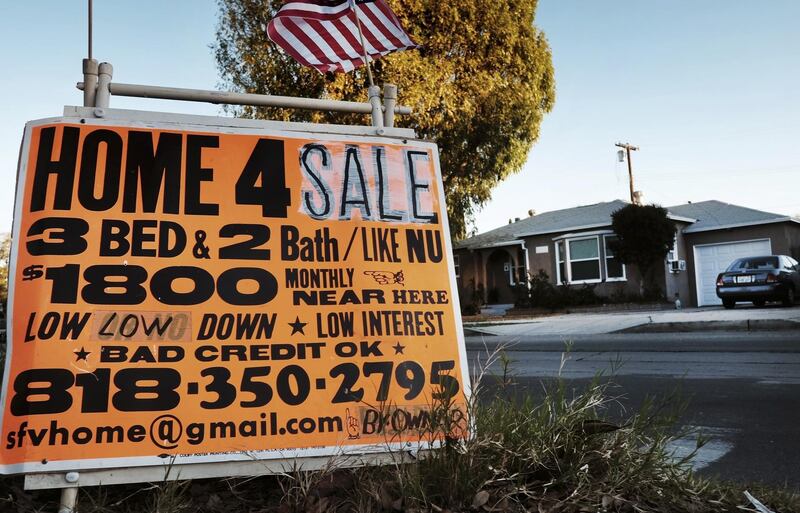The last financial crisis occurred in part because unregulated lending in the mortgage market got out of hand. Believe it or not, it’s starting to happen again, and could ultimately precipitate another disaster unless regulators get their act together.
Make no mistake, regulators have done plenty to rein in the mortgage business since the 2000s. New rules require that lenders carefully assess borrowers’ ability to pay, and that mortgage servicers - which process payments and manage other relations with borrowers - give troubled customers plenty of opportunity to renegotiate their debts before resorting to foreclosure. The Federal Reserve performs regular stress tests to ensure that banks have enough capital to weather defaults.
The problem is, the requirements have weighed most heavily on traditional, deposit-taking banks. The added hand-holding required in mortgage servicing, for example, has roughly quadrupled the cost of handling delinquent loans, turning them into major loss-makers. Together with stringent capital requirements, this has all but guaranteed that banks will lend only to people with the most pristine credit. In some cases, they have given up the business entirely: late last year, Capital One announced it was exiting mortgage origination because it was “structurally disadvantaged".
So who has the advantage? Well, much of the regulation doesn’t apply to non-bank lenders, which typically originate mortgages and quickly sell them onward to be packaged into securities for investors. These “shadow banks” don’t take deposits, don’t have much capital and are usually overseen by state banking authorities, which tend to be less stringent. They are also considerably more aggressive than their bank counterparts.
_______
Read more:
How will higher interest rates affect your finances in the UAE?
Weighing up the pros and cons of buying a house
Why every long-term expat should buy a property in the UAE
Not feeling the global recovery? Neither is anyone in the US
______
The nonbanks’ growth has been breathtaking. At the end of 2016, such unaffiliated mortgage companies accounted for more than 40 per cent of new conventional mortgages (those eligible for sale to government-controlled guarantors Fannie Mae and Freddie Mac), twice the share they accounted for just eight years earlier. They’re also responsible for a decline in credit standards: the average FICO score (a measure of consumer credit risk) at origination stood at 730 at the end of 2017, down from 750 five years earlier. For loans guaranteed by the Federal Housing Administration - an area where the nonbanks’ share is greatest - the average FICO score has fallen to 680.
The shift has been even more extreme in mortgage servicing. Nonbanks now service about 51 per cent of all loans packaged into new Freddie Mac securities, according to mortgage analytics firm Recursion. That’s more than double the share of just five years ago. For securitised FHA loans, the share stands at a staggering 83 per cent. Again, banks are leaving the business: last year, CitiMortgage announced it would exit by the end of this year, transferring the servicing rights for about 780,000 mortgages.
What accounts for the nonbanks’ appetite? They might argue that their processes and technologies give them greater confidence in their underwriting. But one can’t ignore the reality that, thanks to relative lax regulation, they also have less at stake. By operating with less capital, they can reap very large returns in good times. In bad times, however, they might not have the capacity to withstand losses or deal with the servicing burden created by widespread delinquencies. As a result, a large swathe of the country’s lending and servicing system could implode when the next crisis hits.
The only solution is to level the regulatory playing field between the banks and the nonbanks. This means raising capital requirements for the latter, and subjecting them to stress tests. Difficult as this might sound, the Dodd-Frank financial reform legislation actually created an institution tailor-made to handle such systemic issues: the Financial Stability Oversight Council. The council should put nonbank mortgage lenders at the top of its agenda this year.
Granted, reining in the nonbank lenders could tighten mortgage credit overall, at a time when it hasn’t been particularly loose by historical standards. At a market peak, though, this might not be a bad thing. And there’s plenty that regulators can do to get traditional bank credit flowing without threatening safety and soundness – such as dispelling some of the uncertainties and complications involved in selling loans to Fannie and Freddie and in servicing loans for the FHA.
Immense public resources have been mobilised to prevent a repeat of the mortgage crisis. It would be a shame if those protections amounted to no more than a Maginot Line.
Richard Koss is an economic and real estate consultant and adjunct professor at the Carey School of Business at Johns Hopkins University






